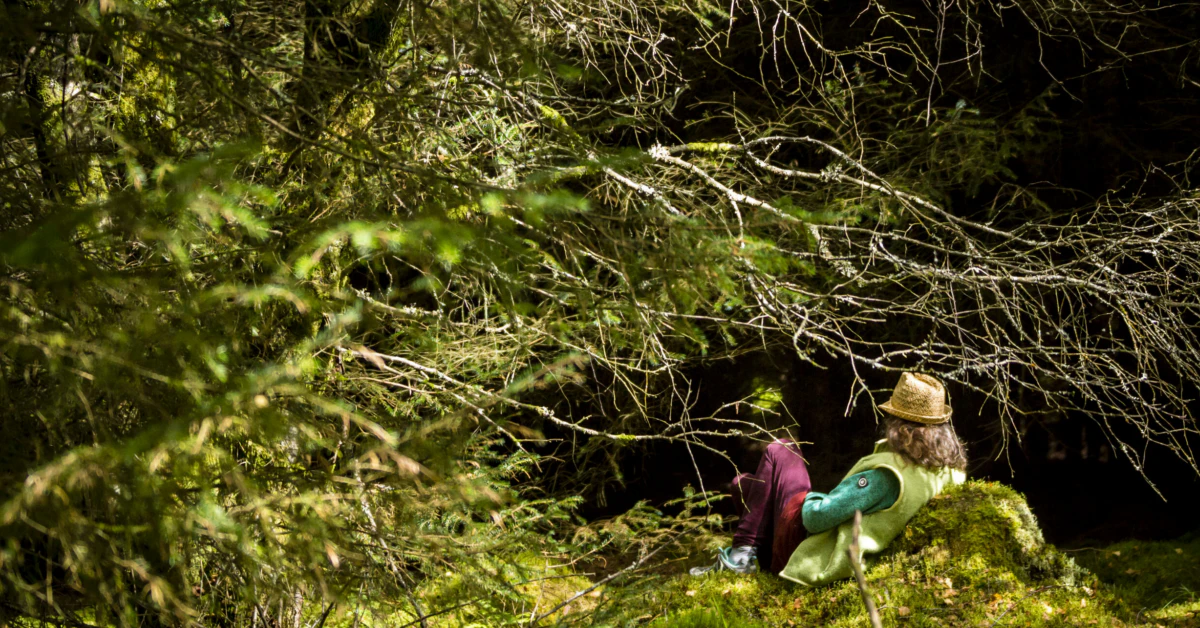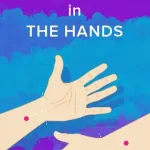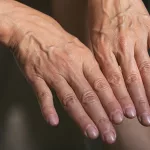Imagine this: You’re slumped at your desk, head throbbing, emails piling up, and the idea of a walk in the woods feels about as likely as spotting a unicorn in your backyard. But what if I told you that something as simple as strapping on a VR headset—or even just staring at your phone with nature sounds playing—could give your brain a sippable version of forest therapy? It sounds airy, but a study by the Max Planck Institute isn’t messing around. They’re saying that virtual forest bathing might just reset your emotional dial when real trees aren’t on the table.
The fast, friendly version of the big question:Can VR nature lower stress? Yep. But like most things, it’s a little messy—literally. You know how real forest bathing smells like damp earth and pine? Well, unless you’re wired up to a scent machine, virtual Shinrin-yoku can’t fully copy that. Still, it’s a chance to shift gears when time or location won’t let you chase the actual trees. Read on—we’ll walk you through the how, why, and why you should maybe try it once, even if you’re the kind of person who asks, “But can’t I just open a window to my sad potted basil plant? (Spoiler: Maybe, but let’s figure out why VR is worth the try.)”
By the end, you’ll know exactly how virtual forest bathing works, how to do it on your terms, and whether it’s actually a fluff-free way to reduce stress. If your mind needs a breath of fresh air (literally and figuratively), you’re in the right place—even if you’ve never heard of Shinrin-yoku until this second.
What Does Virtual Forest Bathing Actually Do to Your Mind?
If you’re thinking “Wait—this is just looking at forest photos and suddenly feeling zen?” you’re kind of right… but also way off base. Turns out, the brain doesn’t just process visuals. The Max Planck/UKE study made participants sweat under stress and then either dropped them into a VR forest with Douglas fir scent and birdsong… or a basic flat-image setup. Guess what won? The 3D immersive experience where three senses got a dose of nature—sight, sound, and smell—helped people bounce back quicker from stress. It’s not magic. It’s mood architecture, built with pixels and physics and intention.
So… Is It Just a Fancy Nature Screensaver?
Not exactly. Virtual forest bathing is intentional, like choosing to eat slowly instead of inhaling your lunch. You show up somewhere, whether it’s your living room with a decent headset or even just your phone on a timber-themed app. A guide might pop up (in voice or video) and say: “Can you hear that breeze crackling through the leaves? That’s not just noise. It’s a shortcut to calming your amygdala—the primal part of your brain that checks for, like, bears and deadlines.” Then you tune in. You try not to judge. You breathe. Maybe you cry. Not every time, of course… but often enough to make it worth mentioning.
How Were Digital Forests Tested for Real Impact?
Back in Prague, a team from Czech University I took 15 people into a real forest for 30 minutes—simple as that. Then they cranked out a 3D scan, built a digital twin with laser scanners, loaded in tree sounds, and gave 20 others the full VR treatment. Then they surveyed the participants (before, during, after). What did they find? The emotional lift was similar for both groups. People had reduced fatigue, less depression, and a good grip on simply chilling the heck out.
What Kind of Forest Is in the Virtual World?
For this latest study, they chose one of Europe’s biggest Douglas fir forests—the Sonnenberg nature reserve near Parchim. Researchers cranked it up to 11: 360° video, high-fidelity audio recordings, and real-deal Douglas fir scent pumped into the room. From the sounds of droplets on moss to the olfactory puff of pine, the VR forest was less “meh stock footage” and more “I sort of forgot I was wearing a clunky headset.”
How Is This Related to Real-World Shinrin-Yoku (and Why Does Multisensory Matter)?
Shinrin-yoku—or forest bathing—originated in Japan in the 1980s. It was one of those “uh duh, of course” ideas: Let people walk quietly through the woods, tune into sensory input, and see what happens. Spoiler: Blood pressure dropped. Stress numbers inched down. The idea caught fire (ironically) across continents.
Now virtual forest bathing takes a bow. Not to replace the real spots, but to get close… especially if you live in a high-rise with zero squirrels in sight. It’s not authentic, which isn’t a bad thing either. Like how plant walls in clinics can mimic trees indoors—a kind of mood nudge. Virtual sessions do the same thing… but with 4D immersion.
Why Engaging Multiple Senses Changes the Game
Let’s put this in layman’s terms—because let’s face it, none of us read about neuroplasticity before coffee. The brain doesn’t like separation. When your eyes see trees, ears catch birds, and nose sniffs pine, the brain flicks into… well, tranquility. Scientists call this the “restorative experience”—because when you get all three signals (visual, auditory, olfactory) from nature at once, your body starts cutting the stress hormones that’ve been plugging your mood outlets. The Max Planck team proved this by testing each sense alone versus all combined. Big mood shift only came with the full sensory pile-on.
What Can’t VR Forests Fully Copy (Yet)?
So… what’s missing? Scientists like those at the MIT Technology Review point out that virtual spaces can’t always cook up the tiny sensations that coax your brain to stay present. Things like… the crunch underfoot of actual twigs. The scent of wet soil after a rain stick. Gentle wind grazing the skin. Those “hidden details” still trip VR’s trying-to-be-helpful spine. So if you’re looking for full emotional reboot specs? Wait a beat. VR just hasn’t mastered spores or leaf drips… but the research says it’s changing moods. Even imperfect experiences work.
What Kinds of People Actually Try This Stuff?
Turns out, it’s a motley crew. Some are “stuck” city folks—no trees near Cubicles & Caffeine at their job. Others are health-conscious professionals chasing what actual nature therapy gives but failing to afford a trip. There are high-anxiety parents, mid-week warriors with zero hiking access, and even you, reading this at—you guessed it—the most unlikely place to park under a canopy.
Do Adults and Children Benefit Equally?
Well… the Forestry England experiment explores nature’s benefits—for humans of all ages. Forest Bathing Ireland ran experiments with both adult and youth participants and found that children zoned into textures and movement (swaying branches, birds taking off) while adults needed grounding cues: “Can you feel the floor? Are your hands free? Can you see the sky even if it’s rendered in pixels?” Either way, the results said: it works. Participants felt more calm. Anxiety softened. Pulse slowed.
Is It Actually Good for Long-Term Wellness?
You don’t just de-stress once and then remain impervious to bad weeks. But here’s the tea: The same 2025 Max Planck/UKE pilot session showed changes lasting “off and on” for days or even weeks after repeated sessions. Not so useful for one-off problems… but: If you commit to even 2–3 guided virtual journeys, they start rewiring the brain for recovery and mindfulness. You learn to linger. Not everything needs a hard stop or a response. Sometimes forest immersion teaches you… that letting go could be your second favorite thing.
And for a Real Wellness Win?
- Hyper-stressed professionals who can’t escape their inbox for a hike.
- People dealing with periods of fatigue, isolation, or frustration—think chronic illness, postpartum cases, or remote workers craving grounding.
- Parents and students itchy for emotional reset, anxiety support during good ol’ life peaks.
But Does It Actually “Fix” Anxiety, or Are We Living in a Nature Mirage?
So… it can de-stress your system? For sure. Can it completely shuffle your anxiety out of the deck? Maybe… not on its own. Asheville Wellness Tours makes this point loud and clear: This isn’t a psychotherapeutic intervention. You still need sleep, therapy, boundaries with your ‘toxic cousin,’ or however you handle adulting. But virtual forest bathing does show promise as a supplementary tool, especially for people who can’t access traditional green spaces easily.
Are You Trying This with a Broken Heart, Not a Broken App?
This one matters. Are you doing VR forest therapy when you’re mid-grief? Radical honesty time: virtual immersion doesn’t patch emotional wounds. Still. Stress lowering—even temporarily—can give your mind a second of relief when other methods feel too heavy. If you’re in a clinic for rehab, recovering at home, or just wiped from your job… it might crack the window on feeling again. But again, this is supplemental—not a replacement for clinical care.
Can I Combine It with My Current Health Routine?
You can hack this several ways. Some clinical psych researchers like to add it as a post-therapy decompression tool. You talk with your therapist, then go home, default into VR timber mode, and ground yourself. Others throw it in before meditation. After yoga. As the “clean off day” ritual. The trick here is what’s working for you. Not what worked for TikTok’s version of zen. Get experimental, if you’re curious. But be honest: If you threw on your glasses and all you did was pick apart the rendering… then ground it. Don’t force it. Real trees do the same thing—it’s just when we’re too distracted by other stuff, it doesn’t catch fire.
Step-by-Step: How to Try Virtual Forest Bathing
This isn’t barefoot-in-real-moss touched me so deep stuff. But you can still immerse effectively from where you’re seated. Ready to try a session with your shoes on? Here’s the play-by-play you need to make sense of the experience:
Do I Need Headgear or an App or… Can I Do This on My Crappy Laptop?
Level 1: Loo Roll VR—Basic but Accessible
Let’s get grounded here. You don’t need a $2K headset:
- Try a forest video on YouTube’s certified sessions (hold a rock or pinecone while you watch). Or digress to calm music with forest imagery.
- If you’ve spent some time online with Calm or Headspace—they have full “connect with nature” tracks you can run without anything other than headphones and 20 minutes.
Level 2: Plug-and-Play Mild Immersion
Available platforms are no joke, either:
- Catch a 1.5-hour live walk with certified guides like Duncan Murdoch? He walks you through a guided experience via Zoom and encourages you to branch mental roots using your surroundings (even suburban visuals through a window—near-enough counts).
- Want deeper visuals? Look for VR forest immersion tools like Google’s Tilt Brush-powered tree-scapes or apps where you can wander digitally. Do not worry about making it feel stagesy. If you wanted showy, you’d be in fitness YouTubes in dayglow.
What Should I Actually Do During a Virtual Session?
A virtual walk with a certified guide isn’t a silent thing unless you want it to be. They don’t make you hike—they make you linger.
Key Invitations to Expect:
- “Sit quietly and observe the light hitting the trunks.”
- “Breathe in the scent of the woods at your camp.”
- “Photograph something 10 steps near you that… has depth.”
- “Bring your leaf, rock, or coffee mug… and observe its texture as if it were forest ground.”
- “Pause as much as you like. No one’s chasing anything here.”
What’s a Session Really Like?
Here’s a summary from real practice, not just the hype dream:
- Minutes 0–5: Calm down enough to believe it counts as a break.
- Minute 20: Pause to notice how the trees lean vs. how your spine aches.
- Minute 35: Legs start falling asleep. “Is this normal forest yoga or am I malfunctioning?”
- Endmark: Leaves you with what guides affectionately call a “toxic positivity clean” for your mind. Free from buzzes and beeps. Not religion-level quiet, but possible magic if you let your senses drink it in.
Where Virtual Nature Therapy Really Makes Sense
Let’s get practical here. Are you in a healthcare setting, school, or office that is begging someone to look less panicked? Virtual forests straight-up cut anxiety in patients overhearing IV beeps and door buzzes all day. They tested it even in terms of “imagine you’re there” rather than making a full VR room. It’s any mod going into stress mode and quietly thinking, “Nah, I choose the lull over leaf-murmurs instead.”
Should Your Team Do Forest VR Instead of That Awkward Coping Retreat?
Yeah. Seriously. If you work in a hospital that handles trauma. In boardrooms that wilt under pressure. During teleworking burnout in 2025… schedule one session for your employees through a provider like Asheville Wellness Tours. They run multi-screen virtual sessions (20+ participants, all live in forest scenes via Zoom). Guide chips in relaxation cues, but leaves everyone to walk the digital dirt path on their own pace. Corporate stress relief that actually sticks. That’s a win in our book—it might even make you slightly fond of your coworkers again.
What If I’ve Tried “Real” Nature—and It Just Doesn’t Click?
Then virtual might just help, especially if the real woods bore the hell out of you. Some folks simply walk into nature and think: “Is this it? A bunch of jays and bark?” But put them into a VR forest with someone talking them through tuning into breeze, birds, and green hush, and suddenly what felt once like magic dust sticks. It’s less “I need to climb mountains” and more “I can just slow my breath and not feel like I’m performance artificentiously being ‘present’.”
Virtual vs. Real Forest Bathing—Which Is Better?
Let’s Talk Numbers: A Quick Pros & Cons Overview
| Virtual | Real |
|---|---|
|
|
|
|
What If You Could Do Both?
Truth bomb: You don’t need to be an all-or-nothing person here. Some guides at Feel More Connected suggest alternating:
- Weekdays: Virtual “ish” relaxation (good walk around your neighborhood + an experience with a certified guide online).
- Weekends: Real dirt, physical wind in face, pine scent that isn’t coming from a diffuser.
Answer: You give your nervous system the mood-swell when it needs it, even if you’re in Lake-effect West Virginia and forest vibes seem impossibly far
How Can This Practice Grow with You?
It’s not just zonk-and-refresh. Guides from certified nature groups whisper this a lot: You’re learning to notice. Whether it’s VR or sanctioned pine-scent, the idea is to stay grounded, present, and not uploading stress to your comfort zone. Start small. End with a walk where “Hey look, a tree on the side of the boulevard!” feels like your personal nature hymn. That’s forest bathing’s hush: it’s not about the big hug. It’s about the pause in the tension.
Final Verdict: Should You Try It?
Let’s Get Real—and Hopeful
I’ve used VR forest sessions on days sleep failed me. On others, I’ve needed the real moss under my fingertips to believe the walk counts. It’s not one silver bullet—just an option with a new bulletproof design in 2025: multimedia nature as a lifestyle nudge.
Still? Nobody’s saying VR replaces the mountains. It’s not a magic compost tea. But it can work as a recovery hack—slightly lighter on the brain, slightly richer in sensory tricks—for urbanites, wheelchairs, or just the plain-in-a-need-of-a-neutral-corner. The studies call this a “valid mental wellness nature experiment.” I call it a solid shortcut.
So… What Should You Actually Do Next?
- Watch the NC session on YouTube that doesn’t need a headset.
- Skim the UKE/MPIB study—but don’t fall into the PDF hole unless you’ve downed caffeine.
- Or better yet: swap one screen scroll today for 15 minutes of seasonal forest photos on Forestry England’s site. Hold a smooth stone. Close the internet tab that whispers you’re behind. Breath once. Maybe twice. Tell me what you feel afterward. I’d love to hear—from the forest-in-you to me in my keyboard chair.
If this post made sense in your current spiral? Cool. If it didn’t, let me know where I missed it. I care about doing this practice right. Not just making it viral. This isn’t a digital forest hype—it’s a gentle reminder: You don’t have to hike a river to feel rescue. Not always. Not forever. But sometimes… even a field of pixels breathes quietly and asks you to linger.


















Leave a Reply
You must be logged in to post a comment.